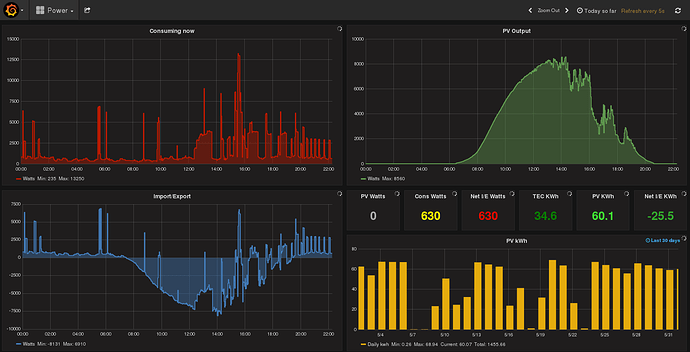After reading some of the “Getting Started” topics, I was able to organize my thoughts and decided to start a new topic.
Background
I just purchased a Solar PV system. I currently have production monitoring enabled. My system uses Enphase components. I just purchased the required (2x) enphase CT’s (SKU: CT-200-SPLIT, https://enphase.com/sites/default/files/downloads/support/CT-Best-Practices-EN-AU.pdf ) to enable consumption monitoring. The process to enable consumption monitoring is well documented in Enphase website. The installer (SunRun) guarantees the system for 25 years and is telling me they do not commonly get customers requesting to enable consumption monitoring, and will not allow me to do it (while they figure out how to support my request). If I do it, I will void the warranty. I also want to monitor individual circuits (air handler, HVAC unit, well water pump, dryer, etc…)
Long story short
I am contemplating the home energy monitor and solar pv monitor solutions from openenergymonitor.org. If I do that:
(1) Can these systems be integrated from the hardware/firmware and visualization software/apps standpoint?
(2), or do I need to install home energy and solar pv monitoring as two separate systems?
(3), or can I have an expanded version of the energy monitor (or solar PV monitor for that matter) and have the firmware generate data for both apps (energy monitor and solar apps)?
(4), or can the hardware and firmware be setup to support both apps and not have two separate systems running in parallel?
(5), or is there an app that integrates home energy consumption and solar production into one, while monitoring specific circuits?
Some of my early thoughts
Energy monitoring, with or without solar pv generation, is the same thing…solar power is just another circuit that can be monitored and do math with (calculate production, consumption, excess, deficit, net metered, etc…). I was already thinking about buying RaspberryPi’s or Arduinos (I have tinkered with them in the past) and attempt a solution, but a google search found you first!
Thanks in advanced!
-Jorge

